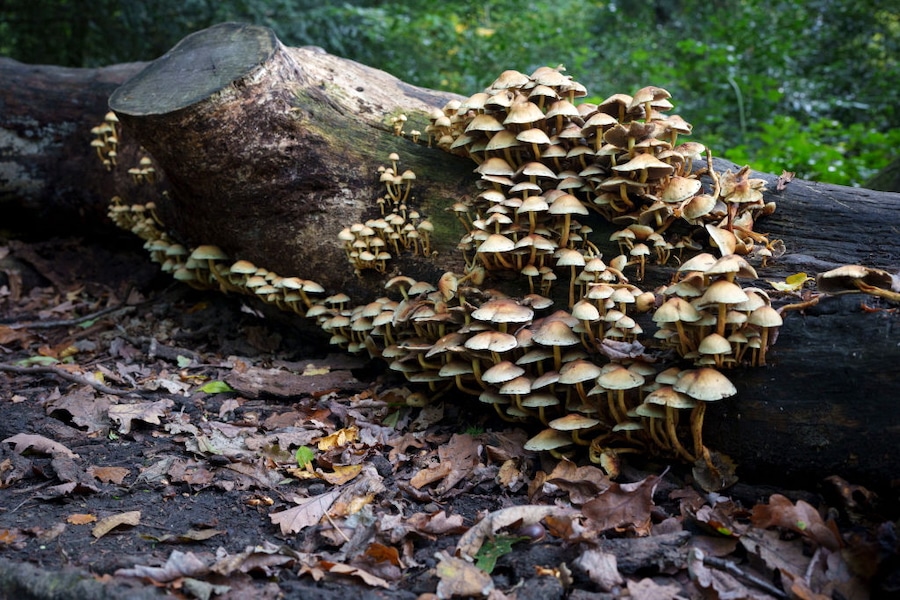This post was originally published on Eco Watch
There are now more than 1,000 fungi species on the International Union for Conservation of Nature (IUCN)’s Red List of Threatened Species. Deforestation, urban development and agricultural expansion are driving their global decline.
There are currently 169,420 species on the Red List, 47,187 of which face extinction, a press release from IUCN said. Recently added to the list are 482 fungi species, bringing their total to 1,300, at least 411 of which are threatened with extinction.
“Fungi are the unsung heroes of life on Earth, forming the very foundation of healthy ecosystems – yet they have long been overlooked. Thanks to the dedication of experts and citizen scientists, we have taken a vital step forward: over 1,000 of the world’s 155,000 known fungal species have now been assessed for the IUCN Red List of Threatened Species, the most comprehensive source of information on extinction risk. Now, it’s time to turn this knowledge into action and safeguard the extraordinary fungal kingdom, whose vast underground networks sustain nature and life as we know it,” said IUCN Director General Dr. Grethel Aguilar in the press release.
Fungi habitats have been replaced by the rapid expansion of urban and agricultural areas, threatening 279 fungi species with extinction. Fertilizer runoff and engine pollution threaten an additional 91 species. In Europe, these are significant threats that impact well-known traditional countryside species like the fibrous waxcap (Hygrocybe intermedia), which is listed as vulnerable.
Illegal logging, deforestation for timber production and forest clearing for agriculture threaten at least 98 other fungi species.
“Clear-cutting of old-growth forests is especially damaging, destroying fungi that do not have time to re-establish with rotation forestry. Thirty per cent of old-growth pine forests across Finland, Sweden and Russia have been cut down since 1975, pushing species such as giant knight (Tricholoma colossus) to become Vulnerable,” IUCN said.
Climate change is also impacting fungi. More than 50 species are threatened with extinction in the United States because of changes in fire patterns, which have altered forest compositions. For example, the high Sierra Nevada mountains have become dominated by fir trees since 1980, reducing the habitat of endangered Gastroboletus citrinobrunneus.
“While fungi mainly live hidden underground and inside wood, their loss impacts the life above-ground that depends on them. As we lose fungi, we impoverish the ecosystem services and resilience they provide, from drought and pathogen resistance in crops and trees to storing carbon in the soil,” said Professor Anders Dahlberg, the IUCN SSC Mushroom, Bracket and Puffball Specialist Group’s Red List authority coordinator, who arranged the latest assessment. “It is important that more old-growth forests are protected. Forestry practices should consider fungi, for example leaving dead wood and scattered trees, and proactive forest management can help manage fire intensity.”
Fungi make up their own kingdom, distinct from plants and animals. They are the second largest kingdom after animals, with approximately 2.5 million species, including roughly 155,000 that have been named.
Fungi support all other ecosystems. Most plants cannot survive without them, partnering up with fungi to absorb nutrients.
Many species of fungi are edible and used in fermentation, food and drink; as the basis for medicines; and to help with cleanup efforts at contaminated sites through bioremediation.
“Fungi are a vital yet often invisible part of biodiversity, supporting ecosystems in ways we are only beginning to understand. The addition of 1,000 fungal species to the IUCN Red List highlights their importance — and the urgent threats they face. With better data, we can take meaningful action to protect fungi, ensuring the health of the plants, animals, and ecosystems that depend on them,” said Dr. Anne Bowser, CEO at nonprofit NatureServe.
The post 411 Fungi Species Face Extinction Worldwide: IUCN appeared first on EcoWatch.





0 Comments